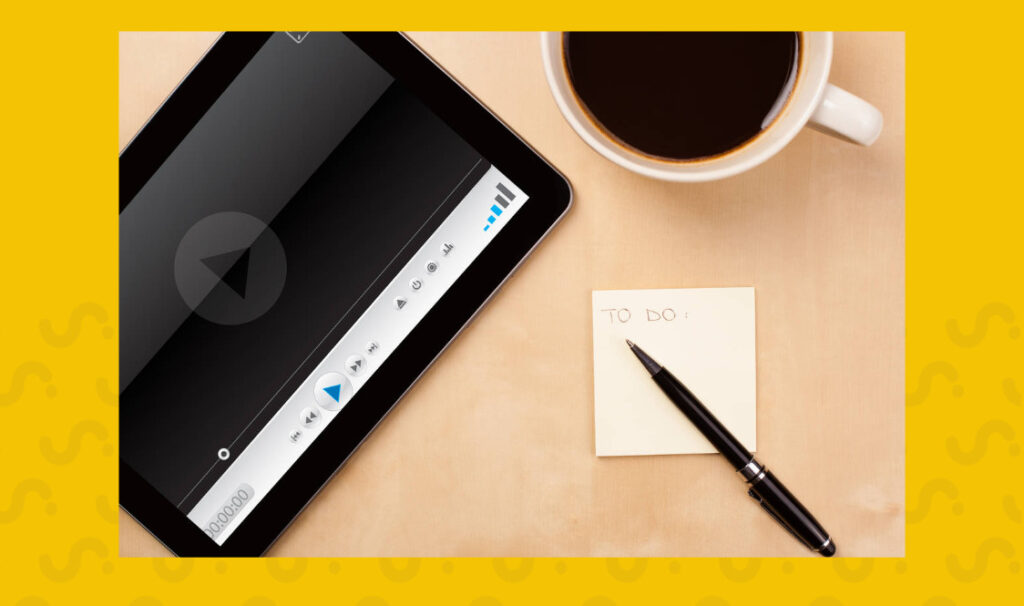Overhaul Your Branding Strategy with Whiteboard Videos
Nowadays, businesses have entered an age where nurturing consumer trust in their brand is the only way to achieve long-term growth. Regardless of how hard they try to promote the quality of their products and services, if the brand as a whole is perceived as unreliable, it will remain not easy to approach.
Brand perception and customer experience go hand in hand, so brands must do everything they can to form positive first impressions that make consumers feel at ease when purchasing their products or engaging their services. And that’s where the power of excellent whiteboard animation comes in, a style designed to educate and inspire trust in viewers while entertaining them.
This piece will explore how you can use whiteboard videos to wow your audience and take your branding strategy to the next level!
How Going Digital Has Placed Huge Emphasis on Brand Reliability
After the COVID-19 pandemic, people became more reliant on e-commerce platforms and remote services, taking our culture more profound into the digital age and causing a new generation of consumers to be born. Learned customers now seek concise-but-thorough information as part of their regular buyer’s journey and will not purchase from a brand unless they trust it.
And, can you blame them? How often do we visit websites and add products to our carts, only to abandon them?
We do this because we’re unsure whether the company will deliver on its promises, and this uncertainty occurs more so when we pursue unfamiliar brands on exclusively digital transactions.
Effective branding revolves around removing doubt from a customer’s mind and allowing your company to build meaningful connections with them. And with digital customer interactions becoming the new normal, your branding strategy has to use tools and practices that make these interactions flow as seamlessly as possible.
Video as the Go-to Medium for Effective Branding
If there are two things every marketer has learned recently about online shoppers, they are impatient and have high expectations. They don’t want to spend hours reading through information that convinces them of a brand’s credibility. They want to be informed in a quick, entertaining, and easy to understand, making video the perfect communication to engage them.
Well-designed marketing video content helps your brand personality stand out while educating prospects without overwhelming them.
Unlike wordy product guides or in-depth text descriptions, you get to use eye-catching audiovisuals to keep people interested in what you have to say and show that you value their time and experience.
Building a strategy around optimized video content helps you reinforce their confidence in your brand, products, and services while prompting them to take action. It, therefore, nurtures a more positive brand perception.
Related Article: 7 Key Elements of Succesful Video Marketing Strategy
The Basics of the Whiteboard Video Style
Whiteboard videos are a specific type of explainer that use whiteboard animation to tell compelling stories while conveying your message and promoting your brand.
Like other similar marketing videos, most brands use them to educate their audience. However, these videos specifically feature a unique combination of storytelling and hand-drawn visuals that make information delivery engaging.
Style-wise, there are two main types of whiteboard videos; live-action and animated. Let’s learn a bit more about each.
1. Live-Action Whiteboard Videos
Live-action whiteboard videos showcase an illustrator’s hand drawing on the board as the narrator speaks. The process is usually sped up to match the narrator’s tempo and help the video flow smoothly. Live-action videos are the more traditional variant and were the go-to before whiteboard animations came about. Using a camera to record the drawing process — usually in a stop-motion fashion — helps brands convey a sense of authenticity. However, they can be pretty tedious and time-consuming to produce.
2. Animated Whiteboard Videos
Animated whiteboard videos are more sleek and clean-cut. While they can feature hand-drawn illustrations, the difference is that they have to be animated into separate frames that are later compiled into a single video.
This Whiteboard style gives companies more flexibility as they can also use computer-generated elements. They’re perfect for brands that seek to educate viewers yet still maintain a sense of professionalism, as animated videos tend to be easier to produce.
What Whiteboard Videos Bring to the Table
Beyond the basics, the whiteboard video formula has been improved and refined for over a decade to produce a style that excels at two key marketing aspects: clear information delivery and generating viewer engagement.
However, those two only form the core of the style; here are a few other ways this style can overhaul your branding efforts.
1. Showcases Brand Personality
Whiteboard videos are the perfect tool to showcase your brand’s vibe while communicating relevant data points to your audience. By telling key prospects what they need to know, and on top of that, doing it with style, you get to connect with them in faster and more meaningful ways.
Narration is essential to any whiteboard video, and companies use speakers that best reflect their brand voice and personality. However, this principle goes beyond just narration and should inform every aspect of your whiteboard video.
2. Simplify Abstract/Complex Ideas
Many companies use whiteboard explainers to break down complex data and deliver their audience’s intricate yet relevant info. Thus, the style has been developed around illustrations and transitions designed to engage the viewer’s attention and create clear links between different ideas and concepts, improving information retention.
Digital marketing lives or dies by how digestible your content is. Even if you are communicating something most of your audience would find of vital importance, you need to do it in a way that most people can get without effort. Whiteboard videos excel at doing exactly that.
3. Adds Zest to Products and Services
Your brand is the story behind your business offerings and how you communicate with the people you are trying to connect with. Through whiteboard videos, you can breathe life into your products and services by presenting relevant information through stories that tie into your company’s image.
Whiteboard videos are known for their use of creative storytelling, allowing you to showcase ideas in exciting ways that align with your brand personality — and have them stand out even more than usual, given the style’s traditionally black & white nature.
Key Design Elements of Whiteboard Videos
The whiteboard video style comprises distinct design elements that give them their unique feel and animation style. Let’s go over each of them in more detail and see how they can contribute to your branding efforts.
White Background and Black-lined Drawings
Yep, you guessed it. To stay true to the style, all illustrations and graphics must be composed primarily of black lines showcased on a white background.
Not only does it help them pop, making it easier to focus the viewer’s attention, but it also helps minimize distractions and transform the use of sparing color into a powerful branding tool.
Storyboard
Storyboards include single frames that pan out each key scene in your video. They come in handy during pre-production when you want to create a rough idea of how your video will flow and the elements they’ll feature. Storyboards are essential because they assist with visual continuity, which is vital to the seamless feel of the whiteboard video style. If your video’s message is presented in a way that’s confusing or inconsistent, it won’t sit well with your audience.
Script
A killer script is a foundation for an excellent whiteboard video. It should have a straightforward plot that outlines the introduction, conflict, resolution, and in this case, final call to action.
Great video scripts stick to the following rules: They use simple language and concepts to avoid confusion. They deliver information in bite-sized pieces and are written in the second person to inform the audience directly. When it comes to whiteboard video scripts, you should include notes on scene transitions and how important drawings and illustrations will flow into the next.
Animated Elements and Characters
Your video must feature characters that fit in with its plot and animated elements that help explain specific concepts. Whether opting for an animated video or live-action instead, you still want to ensure that the experience feels genuine. When it comes to whiteboard videos, the essential visual staples are the drawing hand and a black-and-white theme. Your illustrations should include 2D and 3D elements that aren’t too detailed or distracting, and your animations should flow seamlessly between scenes.
Narration and Sound Effects
As mentioned before, your video should convey your brand’s personality, voice, and tone. Hence, finding a narrator who can represent your brand well is crucial.
Another element to consider is sound effects, which can add depth to your visuals and help you focus the viewer’s attention on important info. You can use royalty-free music to find fitting accompaniments to your on-screen visuals and ensure narration syncs flawlessly to your animations to ensure your video flows smoothly, without any random pauses or awkward silences.
Manage all your design elements in a single cloud-based location
The 4 Essential Stages of Whiteboard Video Production
Having gone through the core elements needed for an excellent whiteboard video, let’s consider how you can combine them to produce a great piece!
There are different ways you can approach producing whiteboard videos, but we’ve provided a step-by-step guide that explains the most important stages to consider.
Step 1: Establish Your Focus & Objectives
This is the foundation every explainer needs to have to be effective, and whiteboard videos are no exception. When drafting scenes and characters, it is essential to have an outline to refer back to so that you don’t go off on a tangent and keep your overall focus and objectives with the piece present. Before starting, have clear answers to questions like:
- What is the key message of my video?
- What will my audience learn from this video?
- How can I naturally incorporate my brand personality into this message?
- How do I expect my audience to respond after the video?
Step 2: Develop and Polish Your Script & Storyboard
Once you have a solid grasp on your objectives for the piece, you can move to outline your whiteboard video’s script and then develop the core scenes of keyframes tied to each par.
When writing your script, your focus and objectives will help you develop character discussions and marketing messages that align with your video’s purpose. Don’t worry about getting it perfect right off the bat. Add in what you think will work, then spend time revising and editing it to be more concise. Ask for feedback from people who understand your brand, and look for opportunities to make the message feel yours distinctively. Then you can move on to the storyboard.
Some people feel intimidated by the prospect of developing a storyboard, but don’t be! Designing a storyboard is essentially creating a comic strip that showcases how your video’s scenes will unfold. It doesn’t have to be super detailed, as most storyboards include rough sketches of each scene’s different characters and elements. Any polishing up will be done during the asset development and animation process.
Step 3: Time to Develop Some Assets
Since there are two main ways to approach whiteboard videos, you need to decide on the style you are going for (animated or live-action) so production can commence in earnest.
For live-action whiteboard videos, you’ll need a physical whiteboard, markers, a camera positioned directly above the board to avoid casting shadows, and a talented artist to draw high-quality illustrations with little-to-no mistakes.
On the other hand, animated whiteboard videos use digital illustrations and assets. So most of the tools you’ll need are software to develop digital art assets and later animate them. With this style, everything — from white backgrounds to draw lines, to even the artist’s hand! — is produced digitally and then combined into a seamless piece.
Regardless of how you go, this stage is about producing the building blocks for your video and iterating on them to make them as high-quality as possible before moving on.
Step 4: Edits & Postproduction
Once you’ve reached this stage, you are one step away from finalizing your masterpiece, but there’s still significant work to be done.
Here’s when you get your editor cap on, as you’ll be combining all the elements you’ve worked on into a cohesive video. Once your visuals are top-notch and have been properly animated, you need to establish the scene sequence, then tie it to the sound design of the piece (which includes not just narration or background music but also sound effects), and synch everything to work flawlessly.
Branding Strategies in Whiteboard Videos: Make Your Content Unique!
Before you go, we wanted to take one tiny step further and discuss specific branding strategies that merge well with the whiteboard video style. Strategies that can help you not only make a cool video but one that also feels distinct and interesting.
Position Your Brand as The Solution to a Problem
Looking for an effective way to connect with your audience? Then identify their pain points and show how your brand can help them eliminate them. This is an excellent premise for a whiteboard video because nothing engages better than relatable situations!
And while you are at it, don’t forget to base your character’s appearance and personality on your audience’s demographics. It’s a great way to generate instant appeal from viewers.
Use Your Brand Color Pallet & Logo (Sparingly!)
When using your brand colors for your illustrations, they should be subtle and not take away from the characteristic black-and-white theme of the style.
This can be done by including a colored border or introducing colored elements at critical points of your video’s story. Another straightforward way to get viewers to associate the video with your brand is by having a small watermark logo on the corner.
Present Your Brand as a Thought Leader
As we mentioned earlier, brand perception is a make or break when building customer trust. What better way to build trust than to showcase your brand’s past accomplishments in a whiteboard explainer?
This can include successful partnerships, company projects, and initiatives that resulted in excellent results. Each brand is different, so your approach is likely to be unique. The best part about using whiteboard animation to discuss your company’s achievements is that they can be presented as an inspiring visual story instead of a boring, lengthy blog.
Wrapping Up
A solid branding strategy is all about showcasing your brand personality in an exciting and informative way. Whiteboard video functions as a great tool to do this because it is highly engaging and easier for audiences to retain.
Through the use of eye-catching design elements, whiteboard videos can snag the attention of prospects faster than any other marketing medium.
Your brand’s personality and ideas can be put into an engaging script that will be presented through relatable characters and real-time situations. Hence, once you’ve established a clear purpose for your whiteboard explainer, it will function as the perfect tool to communicate your brand values and generate brand awareness!










